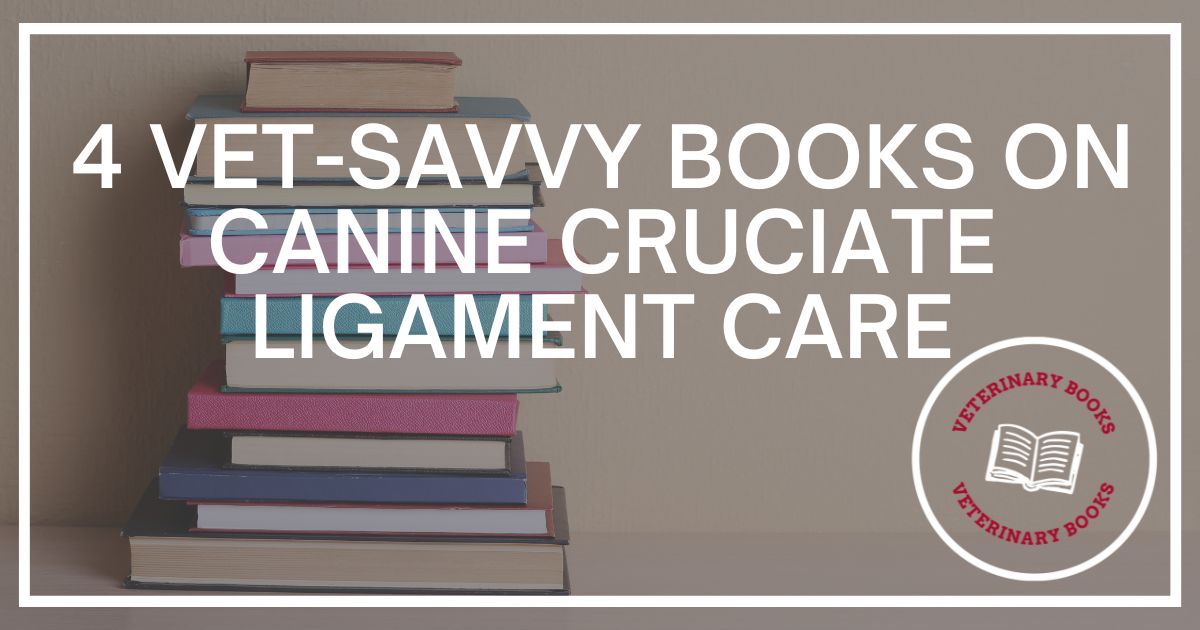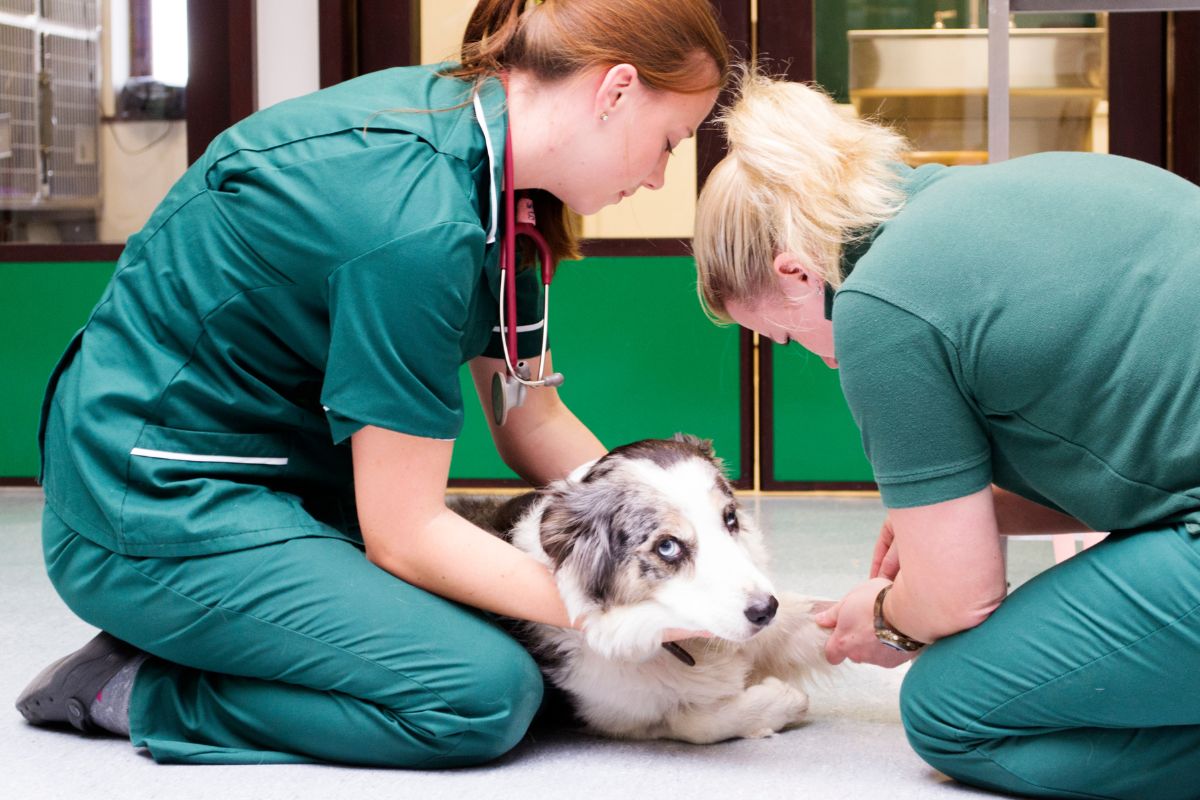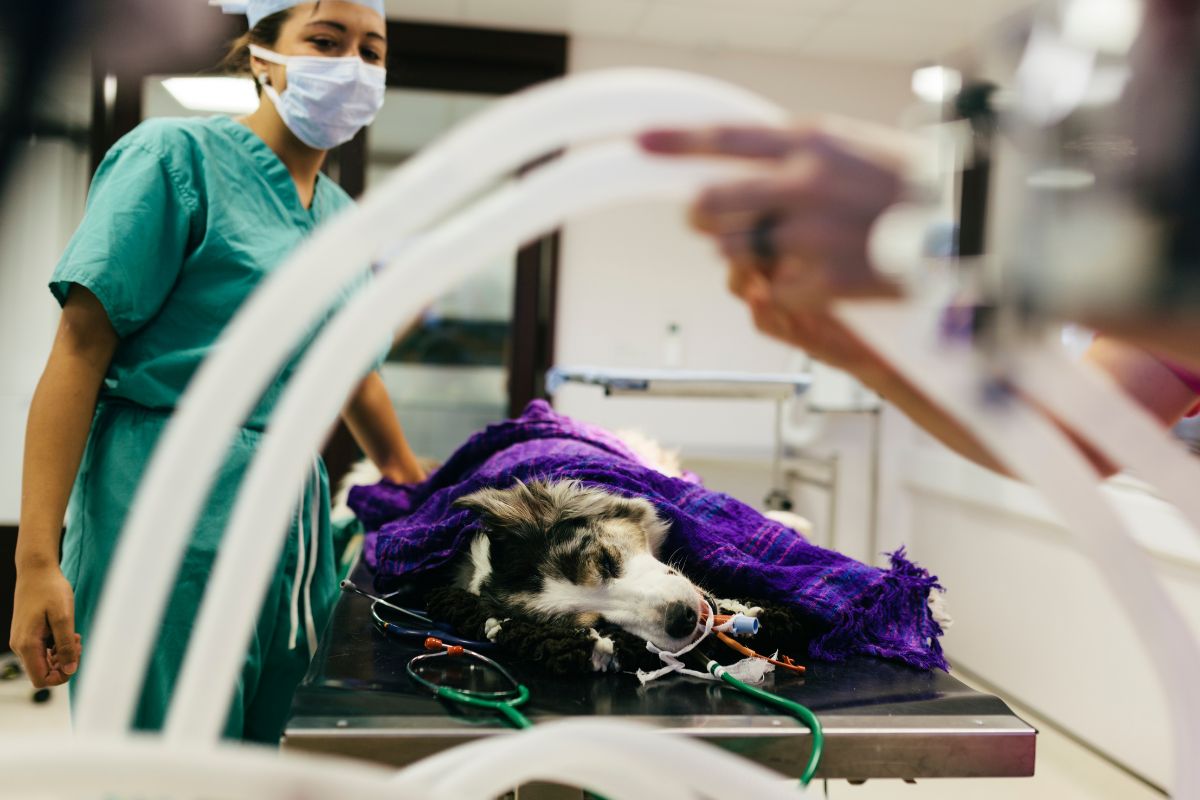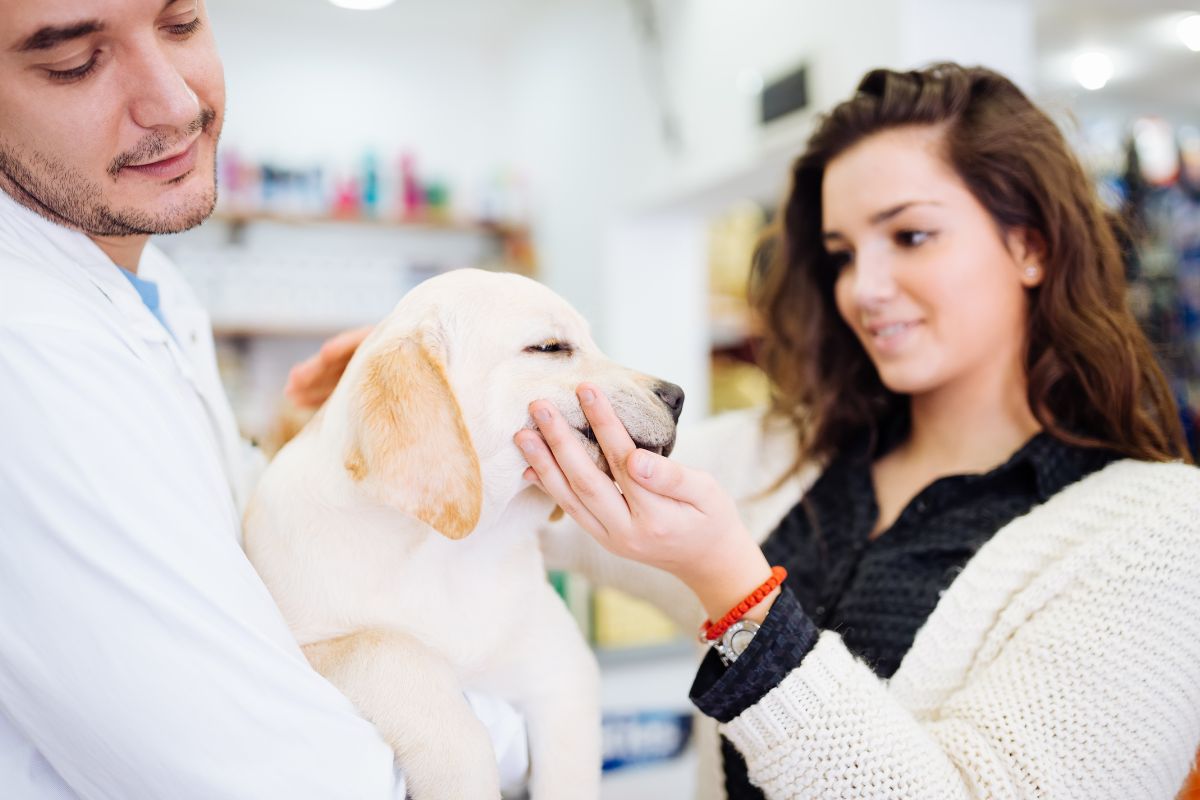What is a Torn ACL in Dogs?
An important component of the knee’s support system is the anterior cruciate ligament, also known as the canine cruciate ligament in animals. This ligament maintains the stability of the knee. The simplest explanation of the knee anatomy is that it has two cruciate ligaments that cross inside the knee joint and stabilize the upper femur and lower tibia.
















4 Must-Have Books on Canine Cruciate Ligament Care
Complications in Canine Cranial Cruciate Ligament Surgery (AVS Advances in Veterinary Surgery) 1st Edition
Author: Ron Ben-Amotz, David L. Dycus
Publisher: Wiley-Blackwell; 1st edition (October 25, 2021)
Language: English
Hardcover: 352 pages
General Overview
Complications in canine cranial cruciate ligament surgery provide revision strategies for correcting the complications associated with surgical repair techniques for cranial cruciate ligament rupture, which is one of the most common causes of hind limb lameness in dogs.
This book is gap-filling in the current literature and provides a solution to the problem at hand. This practical guide covers articular, extra-articular, osteotomy repair techniques, non-surgical management, physical rehabilitation, clinical decision-making, and more. It also presents step-by-step instructions for numerous surgical correction techniques.
The introduction provides an overview of the cranial cruciate ligament tear, diagnosis, and treatment goals; the book then discusses the available methods to minimize the risk of infection at the surgical site and complications.
The subsequent chapters explain how to recognize, assess, and rectify any complications that may arise due to a particular technique and describe any potential problems that may occur.
Throughout the book, hundreds of clinical photographs of the highest possible quality show the outward manifestations of complications and demonstrate each stage of the treatment process. This guide includes:
- Offers detailed instructions for surgical procedures that can correct the most common complications.
- The importance of surgical decision-making, as well as specific strategies for surgical correction, have much emphasis here.
- Contains revision strategies for the identification of complications during intraoperative procedures
- Includes the evaluation of postoperative complications as well as their identification.
- More than four hundred photographs and clinical images are inside.
Complications in Canine Cranial Cruciate Ligament Surgery, a volume in the cutting-edge Advances in Veterinary Surgery series, is an invaluable resource for surgical residents, veterinary surgeons, and general practice veterinarians alike. This volume covers the full spectrum of potential complications that can arise during this surgery.
Published in conjunction with the American College of Veterinary Surgeons Foundation is a thorough and useful guide on frequent complications of cruciate repair surgery.
Complications in CCL Surgery in dogs, which fills a void in the existing literature, offer revision strategies for fixing the difficulties connected with surgical repair methods for ruptured cranial cruciate ligaments, one of the most frequent causes of a dog’s hind limb lameness.
This practical manual provides step-by-step instructions for several surgical correction techniques. It also covers non-surgical care, physical therapy, clinical decision-making, osteotomy repair, and extra-articular and articular repair methods.
The book’s first section provides an overview of cranial cruciate ligament tears, their diagnosis, and intended treatments. Next, it discusses techniques for reducing surgical site infection and its consequences.
The issues that could arise from a particular technique are in later chapters, along with instructions on how to spot, assess, and resolve them. Numerous top-notch clinical images illustrate each phase of the remedial process and depict the appearance of complications throughout the book.
Complications in Canine Cranial Cruciate Ligament Surgery is an essential resource for surgical residents, veterinary surgeons, and general practice veterinarians alike. It is a part of the cutting-edge Advances in Veterinary Surgery series.
Best Sellers Rank:
- #1,149,345 in Books
- #170 in Small Animal Medicine
- #467 in Small Animal Veterinary Medicine (Books)
- #6,109 in Dog Care
Advances in the Canine Cranial Cruciate Ligament (AVS Advances in Veterinary Surgery) 2nd Edition, Kindle Edition
Author: Peter Muir
Publisher: Wiley-Blackwell; 2nd edition (December 1, 2017)
Language: English
Print length: 341 pages
General Overview
The second edition of Advances in the Canine Cranial Cruciate Ligament presents an in-depth, focused, and up-to-date coverage of current knowledge on ACL tear in dogs, using an evidence-based approach that considers the perspectives of multiple disciplines.
This article reviews the most recent information available on one of the most common causes of lameness in dogs.
Presented under the direction of a famous surgeon and researcher, with chapters authored by preeminent authorities in the field
Includes six new chapters and the previously published ground-breaking first edition.
This is a helpful resource for clinicians, residents, interns, or veterinary students looking for the most recent information on the cranial cruciate ligament. Its compilation was by top experts and edited by Dr. Muir, a highly esteemed veterinary orthopedic surgeon and researcher.
This book is an attractive, in-depth resource for a severe orthopedic disorder, thanks to its user-friendly format and numerous outstanding images. This handy book is an excellent, thorough, and up-to-date assessment of the most recent research on cruciate rupture.
The only unique book that focuses entirely on the canine cruciate ligament is Advances in the Canine Cruciate Ligament, which explores everything from the ligament’s microscopic anatomy to the several therapeutic options available to practitioners.
Any university, specialized hospital, or general practice with a high orthopedic caseload should add this book to their library.
The seminal book on canine cruciate ligament rupture has updated Advances in the Canine Cranial Cruciate Ligament, Second Edition. The book presents current knowledge on cruciate ligament dog conditions and points to future advancement in the field of study and practice. It includes six entirely new chapters and thoroughly updated content throughout.
The book is a cutting-edge, multidisciplinary reference edited by a prominent clinician scientist in the field, including contributions from specialists in several areas.
The book offers the knowledge required to correctly identify, treat, and manage cases of cruciate ligament rupture by covering all facets of the cruciate ligament dog symptoms, including its anatomy and function, etiopathogenesis, clinical characteristics, surgical therapy, and medical care.
It also has a ground-breaking portion that looks at potential future developments in diagnostic and therapeutic approaches.
It presents a state-of-the-art summary of the most recent findings about this significant factor in canine lameness led by a well-known surgeon and researcher. It also features chapters authored by top authorities on the subject.
Six additional chapters provide an update to the ground-breaking first edition. The most recent information about cruciate rupture and repair is available in Advances in the Canine Cranial Cruciate Ligament, a valuable resource for veterinary surgeons, clinicians, residents, and students.
Best Sellers Rank
- #2,849,236 in Kindle Store
- #500 in Small Animal Veterinary Medicine (Kindle Store)
- #1,837 in Small Animal Veterinary Medicine (Books)
- #7,215 in Pet Dogs
Owner's Guide to Canine Rehabilitation: Recovery after cranial cruciate surgery Paperback – October 3, 2014
Author: Jacqline Irwin
Publisher: CreateSpace Independent Publishing Platform (October 3, 2014)
Language: English
Paperback: 58 pages
General Overview
The Owner’s Guide to Canine Rehabilitation is an easy-to-follow at-home guide that will help you successfully rehabilitate your dog following Cranial Cruciate Ligament Surgery so that it can fully recover and continue to thrive after the procedure. It includes activities, time frames, and the week’s duration immediately following surgery.
Additionally, it includes helpful tips for preparing your house and yourself for your dog’s homecoming. This book is for use only after receiving permission to do so from your veterinarian.
Best Sellers Rank
- #4,011,943 in Books
- #19,627 in Dog Care
The Essential Dog Owner's Manual for CCL Injury: What to Do Before, During & After Surgery Paperback – October 29, 2018
Author: Carla J. Spinelli
Publisher: Independently published (October 29, 2018)
Language: English
Paperback: 137 pages
General Overview
You’ll find the most comprehensive guide to treating your dog’s knee injury anywhere.
Your canine companion has a torn CCL, and you’re worried that surgery will worsen things. You were looking for answers, but the Internet did not provide them. You ended up being even more perplexed as a result.
Having surgery is a major undertaking. You have to be sure that the choice you’re about to make is one that you won’t regret. You want to see your best friend smile and be able to run and play again. That’s all you want.
The Essential Dog Owner’s Manual for CCL Injury is the only resource that can transform you from uncertain to self-assured by instructing you on the following topics:
- Alternatives that are less invasive that you can try before surgery.
- Get yourself, your family, and your dog ready for the procedure.
- Arrangements to make around the house while your dog is undergoing surgery
- Instructions that are necessary for a healthy recovery after surgery
- This manual has more than 100 pages and is full of objective and descriptive information. It will take you from pre-surgery to post-op care and help you prepare for what to expect at each stage of the process.
Best Sellers Rank
- #461,657 in Books
- #172 in Small Animal Veterinary Medicine (Books)
- #2,307 in Medical Diseases (Books)
How are the ACL and CCL Injured in Dogs?
When the joint flexes partially, excessive internal rotation of the tibia is the most frequent reason for cruciate ligament rupture. This might happen due to trauma or running while the body is still moving forward and planting the hind limbs.
The ACL is a crucial component of the knee’s stabilization system. In dogs, it is the cranial cruciate. When you are carrying weight, it prevents the tibia from moving forward to the femur. Without surgery, it may be challenging to heal from this injury. ACL tears frequently result in knee joint instability and may have a long-term impact on joint health.
The most likely cause of lameness in dogs is a torn anterior cruciate ligament (ACL). The most common cause of hind limb lameness in dogs is an anterior cruciate ligament (ACL) injury, either completely or partially.
Although any breed can experience this, it seems more common in the larger types (such as Golden Retrievers and larger). It is crucial to remember that a burst or torn cruciate ligament in a dog rarely results from a very traumatic occurrence. Instead, the cruciate ligament is experiencing a degenerative process.
The following are the leading causes of this degeneration:
- Aging
- Genetics
- Obesity
30 to 40% of dogs with the cruciate disease will eventually rupture the anterior cruciate ligament in the other knee due to the degenerative nature of the condition.
Options for surgery if your dog has an ACL tear:
(Band technique | Lateral Suture Technique) Extracapsular Repair
To restore the appropriate function of the knee in dogs weighing more than 10 pounds (4.54 kilograms), you must surgically repair the cruciate ligament. The extracapsular approach is the most common method (band, tightrope procedures).
During this procedure, two surgical-grade nylon bands are installed around the knee to replicate the functions of an intact ACL—ninety percent of patients complete this treatment.
Osteotomy for Tibial Plateau Leveling (TPLO)
This treatment is particularly effective in repairing torn ACLs in larger dogs 80 pounds ( 36.3 kilograms). A board-certified veterinary surgeon must do the treatment because it is much more complex. A 90% success rate for this therapy demonstrates how effective it is.
The following are the primary variations between the two procedures:
The TPLO operation is more expensive than the extracapsular method.
- Compared to the extracapsular (band) method, dogs who undergo the TPLO treatment tend to weight-bear more quickly during the recuperation period.
- Can dogs that have had their ACLs torn heal without surgery?
ACL tears that are complete are a frequent dog injury. Conservative care may be effective when the ACL tear is only partially, but the dog still has stability in the knee. However, a fully torn ACL necessitates treatment, immobilization, or surgery. The surgical methods above can repair ACL injuries in dogs successfully.
Alternatives to surgery, such as orthopedic braces and vitamins, can treat some dogs. Consult a veterinarian to know whether your dog needs surgery and whether any non-surgical options could be necessary.
Although there are braces for dogs with ACL damage, they are frequently ineffective and have low owner satisfaction rates. Your dog may find the braces uncomfortable and must wear them constantly when bearing weight.
What Circumstances Could Make an ACL or CCL Injury More Likely?
Animals with a rupture on one CCL are more likely to rupture the opposite side in 1 to 3 years. Finally, immune-mediated diseases may weaken and cause the complete failure of one or both CCLs. Conformational knee injuries, such as patella luxation, contribute to repeated stress on the CCL.
Obesity increases the stress on support structures. ACL or CCL injuries are more common in some breeds, including Mastiffs, Newfoundlands, Akitas, St. Bernards, Rottweilers, Chesapeake Bay retrievers, American Staffordshire terriers, and Labrador retrievers, according to recent studies.
How is a Cruciate Ligament Rupture Diagnosed? What are the Warning Signs?
The most frequent knee injury in dogs is a torn ACL or CCL; until proven otherwise, abrupt lameness in the hind limb is typically due to a torn cruciate ligament injury. The most typical symptoms are:
- Acute discomfort in the back limb.
- Swelling in the knee.
- Instability in the knee.
- Weakness in the back limb.
The presence of a particular kind of knee instability known as the “cranial drawer sign” is crucial for diagnosing a ruptured cruciate ligament. At this point, the tibia advances when the femur palpates, resembling the motion of opening a drawer.
When testing large, hurting dogs, it is frequently best to sedate the animal so that the knee may be completely relaxed. Radiographs, MRIs, and arthroscopic surgery are a few other crucial supportive diagnostics you may use.
When Should you consult for an ACL or CCL Tear?
Surgery is the most effective and reliable technique to treat torn ACL in dogs because cruciate ligament tears cause gradual and degenerative changes inside and around the joint. According to historical data, ACL tears in dogs that initially only have a partial tear almost always progress to a full tear within a few weeks or months.
Early surgical repair results in a more thorough and speedier recovery with fewer risks of deteriorating cartilage over time or compromising the cruciate ligament in the opposite leg. The two types of surgeries frequently carried out are arthroscopy versus arthrotomy and intra-articular versus extra-articular.
Extracapsular repair, which is virtually exclusively utilizable in small dogs, Tibial Plateau Leveling Osteotomy (TPLO), and Tibial Tuberosity Advancement (TTA) are the most common surgical procedures in medium- to large-breed dogs. Regular recovery times for dogs after surgery are ten days for weight support and 3–4 months for full function.
The Final Verdict
A damaged anterior cruciate ligament (ACL) is one of the most common illnesses seen in dogs. Treatment for an ACL injury must always include rest, immobilization, and, in some cases, surgery. An injured ACL in a dog could heal completely even without any treatment from a veterinarian.
Many dogs can recover using non-invasive treatment options such as orthopedic braces and vitamins. Talking to an experienced veterinarian is the only way to determine whether it is necessary to operate on your dog and whether or not there are any choices.
After finding out from a veterinarian that your dog has a torn ACL, you next need to consider the various options you have for ensuring your dog’s continued good health.
Injuries to the anterior cruciate ligament (ACL) are rather common among athletes who play football, soccer, and basketball. You have probably heard of these injuries. In humans, we refer to the thin band of connective tissue in the middle of the knee as the anterior cruciate ligament (ACL).
In dogs, this same band of tissue is the cranial cruciate ligament (CCL). As a result, we will discuss tearing off the canine collateral ligament (CCL) while discussing this knee injury in dogs.
Surgery to repair a dog’s torn ACL is invasive and can be expensive. Pet owners looking for a less invasive and more affordable treatment frequently turn to conservative treatment options such as orthopedic dog braces, which can stabilize the knee joint, and joint health supplements.
The effectiveness of non-surgical alternatives to dog ACL reconstruction is highly dependent on various factors, such as the severity of the tear, your dog’s age, general health, the level of activity they engage in, and the medications they are currently taking, and many more.
Talk to your dog’s veterinarian to find out if there is another treatment for CCL tears that might be beneficial for your pet. Read our article and find out Veterinary Books for Beginners.






